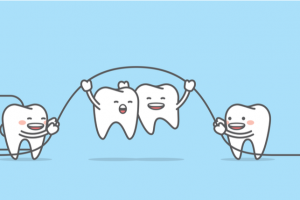 HOME
HOME1 – Flossing removes food debris and plaque that is wedged in the hard to reach areas between teeth. This plaque buildup can lead to cavities and cause bad breath.
2 – 40% of your tooth surface is hidden between your teeth, so brushing alone isn’t enough. Your toothbrush can’t reach between your teeth!
3 – Don’t be put off if your gums start bleeding. We’re all programmed to think blood is bad, but in the case of flossing, to start off with anyway, it’s normal. The more you do it, the less you’ll bleed
4 – If you don’t like using floss, we have a range of other interdental cleaning aids that will help reach those awkward places. Curaprox brushes and floss picks are great at reaching annoying places. Ask next time you’re at the dentist for a demonstration.
5 – To get to those areas at the back of your mouth, close slightly. This makes access easier, even when brushing.
6 – The two main types of floss are monofilament, and multifilament floss. Monofilament floss is made of plastics and rubber, while multifilament is mainly composed of nylon and silk.
7 – People with orthodontic devices like braces can floss too! Floss threaders and proxabrushes are great ways to helps people wearing braces remove food debris from between their teeth, and stuck in their brackets or orthodontic equipment.
8 – Waxed floss is easier to slide between closely spaced teeth. If your teeth are very close together, we suggest flossing with thin waxed floss.

| Cookie | Duration | Description |
|---|---|---|
| cookielawinfo-checkbox-advertisement | 1 Year | The cookie is set by GDPR cookie consent to record the user consent for the cookies in the category "Advertisement". |
| cookielawinfo-checkbox-analytics | 11 months | This cookie is set by GDPR Cookie Consent plugin. The cookie is used to store the user consent for the cookies in the category "Analytics". |
| cookielawinfo-checkbox-necessary | 11 months | This cookie is set by GDPR Cookie Consent plugin. The cookies is used to store the user consent for the cookies in the category "Necessary". |
| cookielawinfo-checkbox-other | 1 year | Set by the GDPR Cookie Consent plugin, this cookie is used to record the user consent for the cookies in the "Other" category . |
| viewed_cookie_policy | 11 months | The cookie is set by the GDPR Cookie Consent plugin and is used to store whether or not user has consented to the use of cookies. It does not store any personal data. |
| Cookie | Duration | Description |
|---|---|---|
| _ga | 2 Years | This cookie is installed by Google Analytics. The cookie is used to calculate visitor, session, campaign data and keep track of site usage for the site's analytics report. The cookies store information anonymously and assign a randomly generated number to identify unique visitors. |
| _gat_gtag_UA_135273458_1 | 1 Minute | This cookie is set by Google and is used to distinguish users. |
| _gid | 1 Day | This cookie is installed by Google Analytics. The cookie is used to store information of how visitors use a website and helps in creating an analytics report of how the website is doing. The data collected including the number visitors, the source where they have come from, and the pages visted in an anonymous form. |
| vuid | 2 years | Vimeo installs this cookie to collect tracking information by setting a unique ID to embed videos to the website. |
| Cookie | Duration | Description |
|---|---|---|
| _fbp | 3 months | This cookie is set by Facebook to deliver advertisement when they are on Facebook or a digital platform powered by Facebook advertising after visiting this website. |